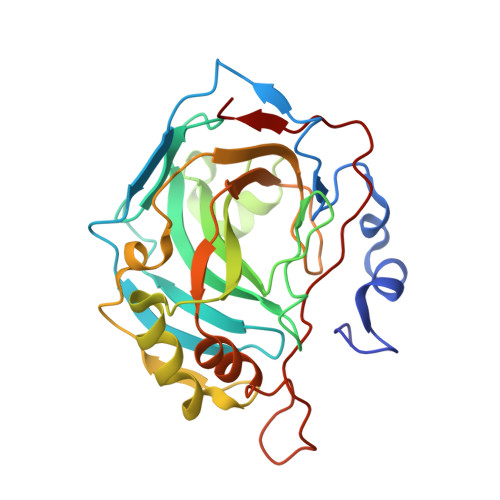A short, strong hydrogen bond in the active site of human carbonic anhydrase II.
Avvaru, B.S., Kim, C.U., Sippel, K.H., Gruner, S.M., Agbandje-McKenna, M., Silverman, D.N., McKenna, R.(2010) Biochemistry 49: 249-251
- PubMed: 20000378
- DOI: https://doi.org/10.1021/bi902007b
- Primary Citation of Related Structures:
3KS3 - PubMed Abstract:
The crystal structure of human carbonic anhydrase II (HCA II) obtained at 0.9 A resolution reveals that a water molecule, termed deep water, Dw, and bound in a hydrophobic pocket of the active site forms a short, strong hydrogen bond with the zinc-bound solvent molecule, a conclusion based on the observed oxygen-oxygen distance of 2.45 A. This water structure has similarities with hydrated hydroxide found in crystals of certain inorganic complexes. The energy required to displace Dw contributes in significant part to the weak binding of CO(2) in the enzyme-substrate complex, a weak binding that enhances k(cat) for the conversion of CO(2) into bicarbonate. In addition, this short, strong hydrogen bond is expected to contribute to the low pK(a) of the zinc-bound water and to promote proton transfer in catalysis.
- Department of Biochemistry and Molecular Biology, Universityof Florida, Gainesville, Florida 32610, USA.
Organizational Affiliation:


















